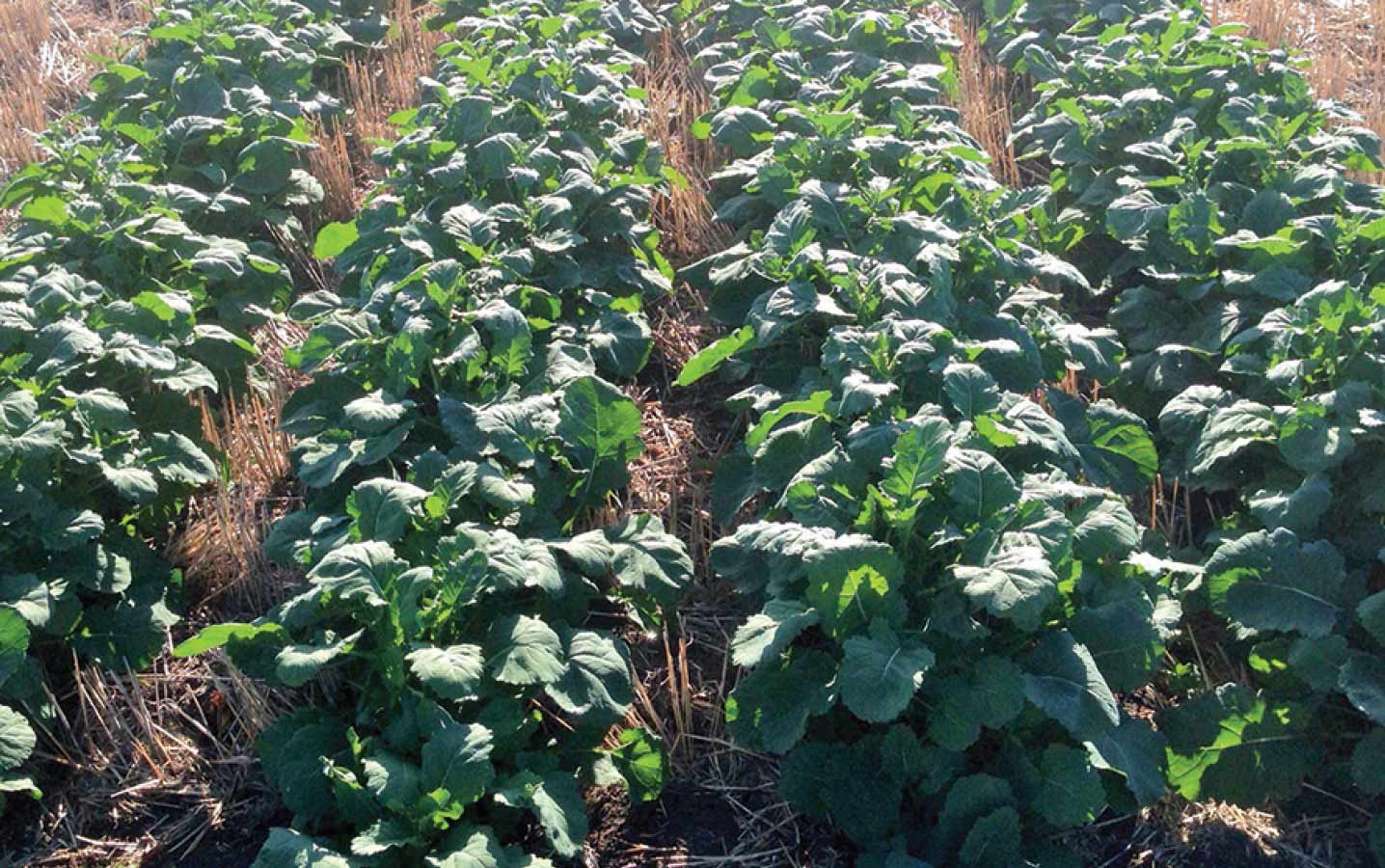Optimum row spacing depends on many factors, including weeds
Key result: Canola is relatively insensitive to increasing row spacing. Farmers have many factors to consider in determining their optimal row spacing, including weed and residue management strategies.
Project title, Principal investigator: “Investigating wider row spacing in no-till canola: Implications for weed competition, response to nitrogen fertilizer, and seeding rate recommendations (2013-2016)” Chris Holzapfel, Indian Head Agricultural Research Foundation (IHARF)
Funding: SaskCanola
Find all previous Science Editions online at canoladigest.ca
and more on research discoveries at canolaresearch.ca
Pros and cons exist for both narrow and wide row spacing in canola production. This is a complex issue that can affect entire production systems. Although several previous studies have focused on row spacing in canola, there have been many improvements over the past twenty years in genetics, seeding/fertilization equipment and weed control options. Relevant research was required under zero- or minimum-tillage, continuous cropping systems using seeding equipment with side-banding capabilities and modern, herbicide-tolerant hybrids.
Led by Chris Holzapfel of IHARF, a multi-year study was initiated in 2013 to evaluate the impacts of wider row spacing on canola performance and to investigate implications for seeding rate, nitrogen (N) fertilizer and weed management recommendations. Three separate field trials were conducted where row spacing levels of 25, 30, 36, 41 and 61 cm were combined with varying side-banded urea rates, seeding rates and in-crop herbicide treatments. For all trials, a glufosinate-ammonium-tolerant (Liberty Link) canola hybrid was seeded using a SeedMaster plot drill. Unless otherwise dictated by protocol, canola was seeded at a target rate of 115-120 seeds per square metre.
Generally, the research showed that canola plant populations declined as row spacing was increased. When averaged across all years and treatments, plant populations declined by 28 per cent (from 85 down to 62 plants per square metre) when row spacing was increased from 25 cm to 61 cm. Increasing row spacing also resulted in slight but significant delays in flowering and maturity. However, row spacing effects on seed yield were small and, in some cases, non- significant, and were always considerably less than environment or other management effects.
Results also suggest that seeding rates should not likely be reduced below typically recommended rates as row spacing is increased. However, there was little benefit to using seeding rates exceeding 90 seeds per square metre when planting canola at 61 cm row spacing.
Results of the side-banded N treatments showed a significant reduction in plant densities with increasing rates of side-banded N in all three years. Despite the negative effects on emergence, canola responded well to side-banded N with sequentially increasing yields right up to 150 kg/ha N in all three years, even at 61 cm spacing. Overall, the results of this study suggest that N requirements of canola are likely similar regardless of row spacing; however, extremely high rates of side-banded N combined with wide row spacing can increase risk of seedling injury.
Weed effect
Although it is generally accepted that weed competition may be compromised at wide row spacing, this study did not show any practical, short-term effects of row spacing that could not be managed with well-timed herbicide applications.
The study did reinforce the overall benefit of weed management. Canola grown without weed control resulted in average yield losses of 21 per cent, with similar loss observed regardless of row spacing. However, for growers dealing with or looking to prevent the development of herbicide-tolerant weeds, narrow row spacing can be an important component to integrated management strategies.
Yield effect
Narrower row spacing consistently produced amongst the highest yields, particularly when combined with high rates of side-banded N. However, row spacing as wide as 61 cm was always viable under the environmental conditions encountered and when combined with timely, effective weed removal. Canola growing on wider row spacing did take longer to achieve canopy closure, but the effects on maturity were negligible.
Although many of the major drawbacks to narrower row spacing are more logistic than agronomic (higher operating and input costs), this can also make it considerably more difficult to seed into heavy crop residues. The numerous, longer-term benefits of slightly wider row spacing could be a topic for further study as this may lead to better seed placement in heavy residues, increased organic matter retention, more timely seeding, better utilization of existing equipment, lower seed-bed preparation requirements and more.
Generally, this research concludes that canola is relatively insensitive to increasing row spacing and there are many factors to consider in determining the optimal row spacing for individual farms. Pros and cons exist for both narrow and wide row spacing – this is a complex issue that can affect entire production systems and, therefore, there is no likely single row spacing that is optimal for all farm operations.





